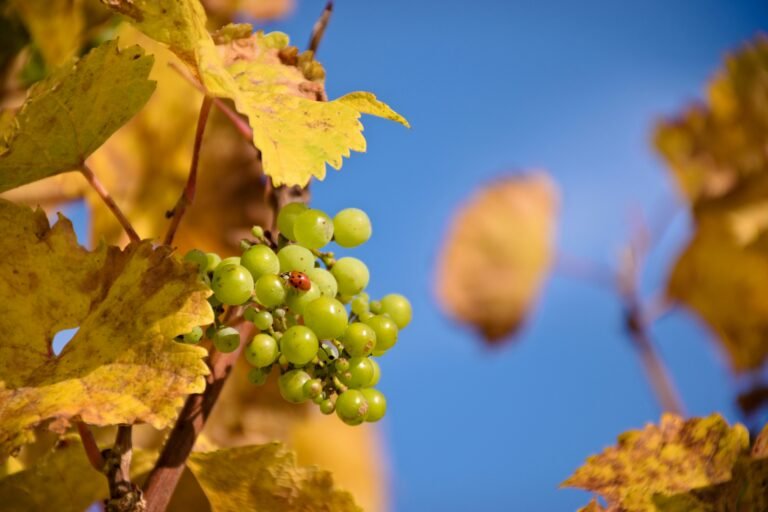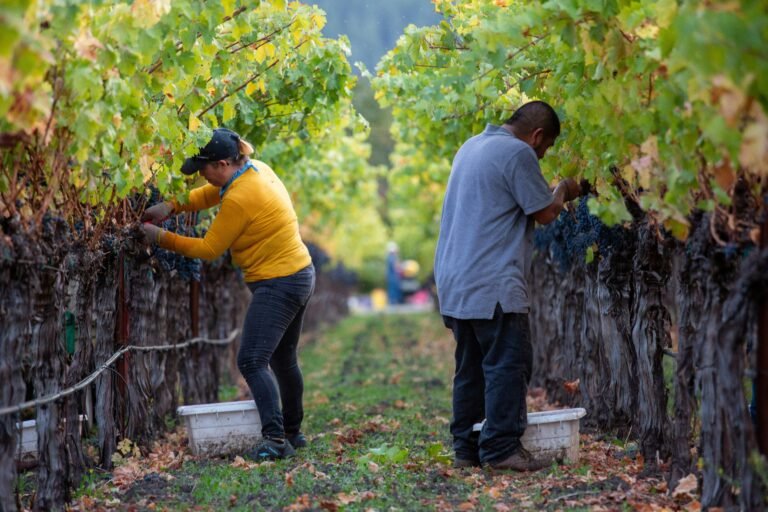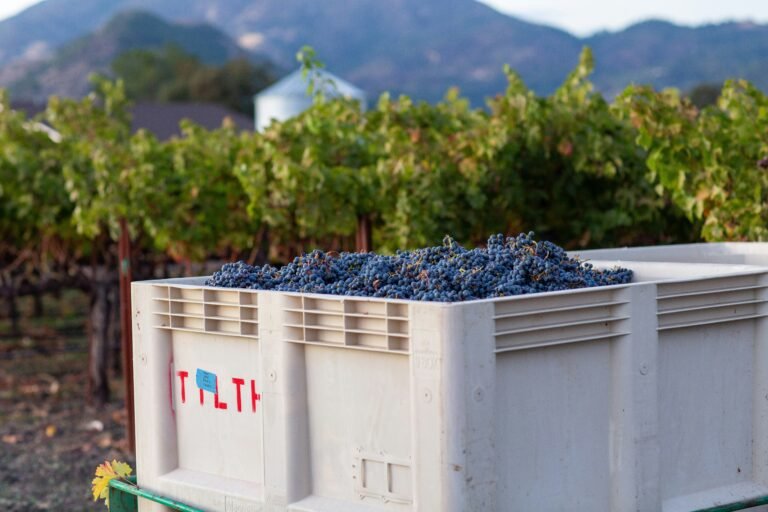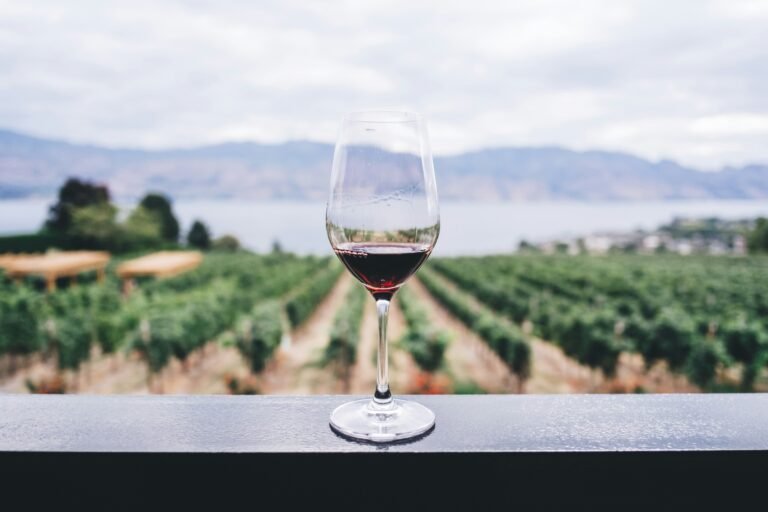A bottle of wine is more than just grapes – it’s the result of a year’s work by a team of specialists and nature itself. But what makes a great harvest, and how does weather influence the quality of the wine? Let’s explore the perfect conditions, the experts involved, and how sustainability is shaping the future of winemaking.
Weather: The Unsung Hero (or Villain!) of Wine Harvestsr
For a perfect vintage, winemakers are at the mercy of Mother Nature. A delicate balance of sun, rain, and temperature is required throughout the year to produce top-quality grapes. Generally, the ideal weather conditions are mild winters with no harsh frost, followed by a warm spring to help the vines bud. Summer should bring plenty of sunshine, but without scorching heat or drought. Lastly, autumn should be dry and cool, giving the grapes time to ripen perfectly.

The 2015 vintage in Bordeaux, for example, is considered one of the best in recent years. With warm but not overly hot summer months, and a dry, cool harvest season, it resulted in wines that were rich, full-bodied, and beautifully balanced. However, not every year is as lucky. In contrast, 2011 saw unpredictable weather across much of Europe, with a hot spring and wet, cool summer, leading to a more challenging and uneven harvest for many regions. Fun fact: 2010 is often hailed as a “perfect” vintage for both Bordeaux and Burgundy. While 2010 was a difficult year for many crops, it was a dream year for winemakers! The weather was a little cooler than usual, which meant a slower ripening process, resulting in wines with exceptional freshness and elegance.
The Team Behind the Bottle: More than Just Grapes
We often think of winemaking as the work of a single talented winemaker, but the reality is that it’s a team effort. Farmers play a critical role in caring for the vines all year long, from pruning in winter to keeping an eye out for pests and diseases in the growing season.

Then, there are the viticulturists, the grape-growing experts who carefully monitor soil conditions, vine health, and grape development. Their work ensures that each bunch of grapes is of the highest quality. Once the grapes are ready to be picked, the oenologist (or wine scientist) steps in. These experts oversee the fermentation process and decide how long the wine should age, how it should be blended, and more. Finally, cellar masters keep a close watch on the barrels and bottles, ensuring that everything matures perfectly.
The Impact of Sustainability: Wine's Green Future
In recent years, sustainability has become a huge focus in the world of wine. Climate change is having a noticeable impact on vineyards, forcing winemakers to adapt. Many are turning to organic farming techniques, reducing water usage, and planting cover crops to maintain healthy soil.

In recent years, sustainability has become a huge focus in the world of wine. Climate change is having a noticeable impact on vineyards, forcing winemakers to adapt. Many are turning to organic farming techniques, reducing water usage, and planting cover crops to maintain healthy soil.
A Few Great and Not-So-Great Vintages
To recap, weather plays a huge part in determining whether a vintage will be one for the books or best forgotten. Here’s a quick rundown of some notable years: 2015 (Bordeaux) – A perfect blend of warmth and dryness resulted in stellar wines, praised for their complexity and richness. 2003 (Europe) – A heatwave year! While some regions managed, others struggled with overripe grapes, leading to wines that were too jammy and lacked freshness. 2012 (Napa Valley) – After a tricky 2011, this was a year of near-perfect weather, producing balanced, elegant wines that were a joy to drink. 2017 (California) – This year was marred by wildfires during the harvest season, affecting the grapes and creating wines with smoky undertones. Winemaking is full of highs and lows, and every vintage tells its own unique story. That’s part of the fun of wine – you never know what you’re going to get!
Cheers to the Year of Hard Work!

So, the next time you pop open a bottle, remember you’re not just sipping the product of grapes but the result of a year’s dedication from farmers, viticulturists, oenologists, cellar masters, and, of course, a little help from the weather. Every glass is a celebration of hard work, tradition, and a dash of unpredictability.
